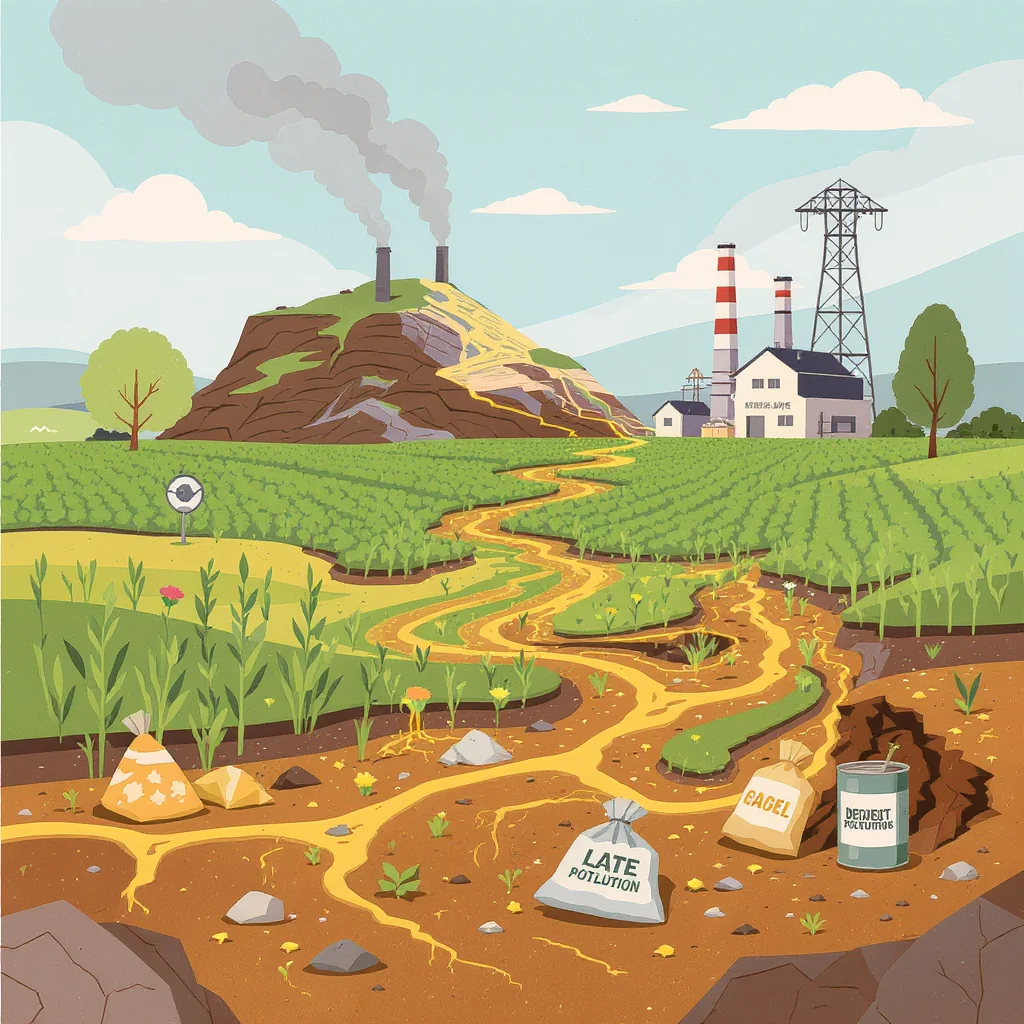Polluted Lands: The Quantified Reality of a National Crisis
In the United States, soil pollution hits hard: according to the EPA, over 1,300 sites are on the Superfund list, but the Environmental Working Group (EWG) estimates that over 20 million hectares are affected to varying degrees. By 2023, the USGS had recorded over 180 types of contaminants in groundwater, direct consequences of land degradation. Nearly 95% of Americans consume food from regions where chemical residues (pesticides, heavy metals, PFAS) exceed recommended thresholds. Agricultural losses due to pollution reach $2.5 billion per year, according to the NY Times. Rural and disadvantaged populations are the most exposed, accumulating health risks and economic difficulties. These figures illustrate the extent of a toxic legacy, often underestimated in public debates.
Deep Causes and Direct Impact on Food Production
The accumulation of pollutants results from a century of industrialization and intensive agriculture. Thousands of factories and mines have discharged heavy metals, PCBs and solvents, while the massive spreading of pesticides and fertilizers has contaminated over 10 million hectares of farmland. The EWG now lists over 2,800 PFAS-polluted sites, some of which exceed the health limit by 70 times. These substances migrate into groundwater, contaminating crops and livestock: over 5% of wheat and corn samples analyzed show worrying traces of toxins. The consequences are tangible: increase in chronic diseases, decrease in soil productivity, abandoned farms. Agricultural families, on the front line, warn of the degradation of quality of life and food resources.
The Interest of Visual Data for Awareness
To illustrate the extent of the problem, the video “How Contaminated Land Affects Our Food” by PBS NewsHour uses interactive maps and testimonials. This report highlights the link between polluted sites, food distribution and social inequalities, while explaining the complexity of remediation.
Quantified Solutions to Restore Polluted Lands
In the face of this crisis, mobilization is underway. Over 1,000 pilot phytoremediation projects are listed by the EPA, already covering 15,000 hectares. Detroit has transformed 1,200 hectares of industrial wasteland into green spaces through its “Brownfields to Greenfields” program. Bioremediation, tested on 200 sites since 2018, can reduce the concentration of contaminants by 60% in five years. Mapping platforms, fed by over 500 NGOs and universities, identify priority areas for interventions. While total rehabilitation represents a colossal challenge (estimated cost: $40 billion over 20 years), these initiatives show that with will, accurate data and innovations, it is possible to bring life back to once condemned polluted lands.
—



